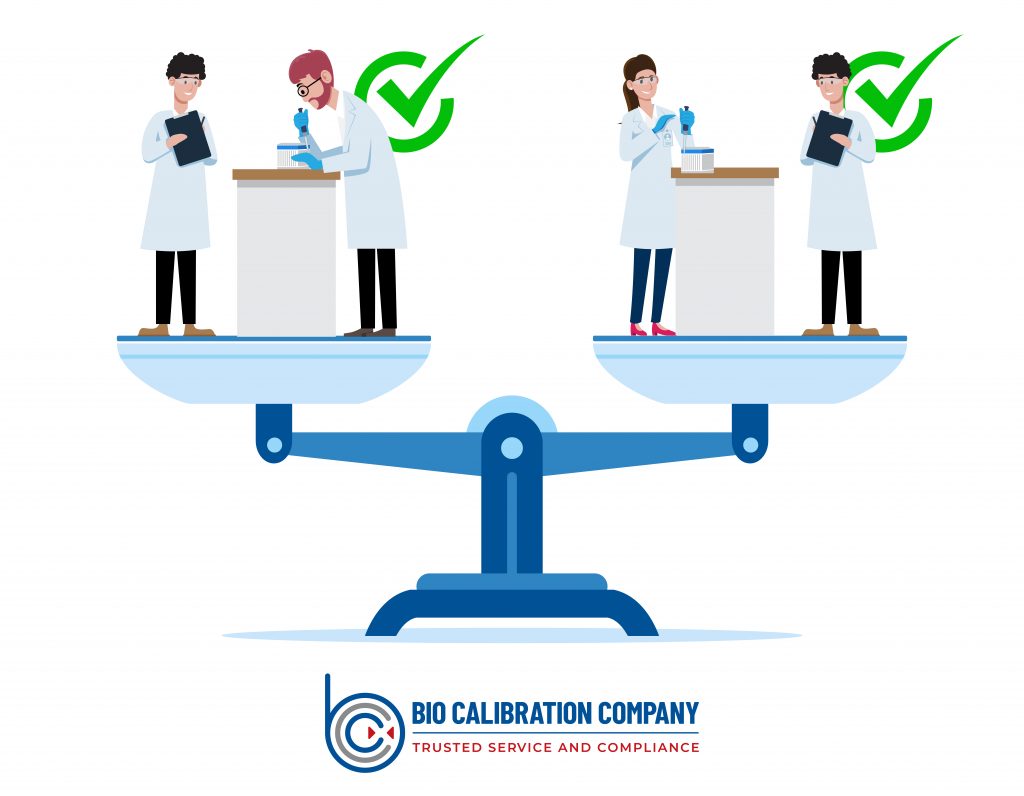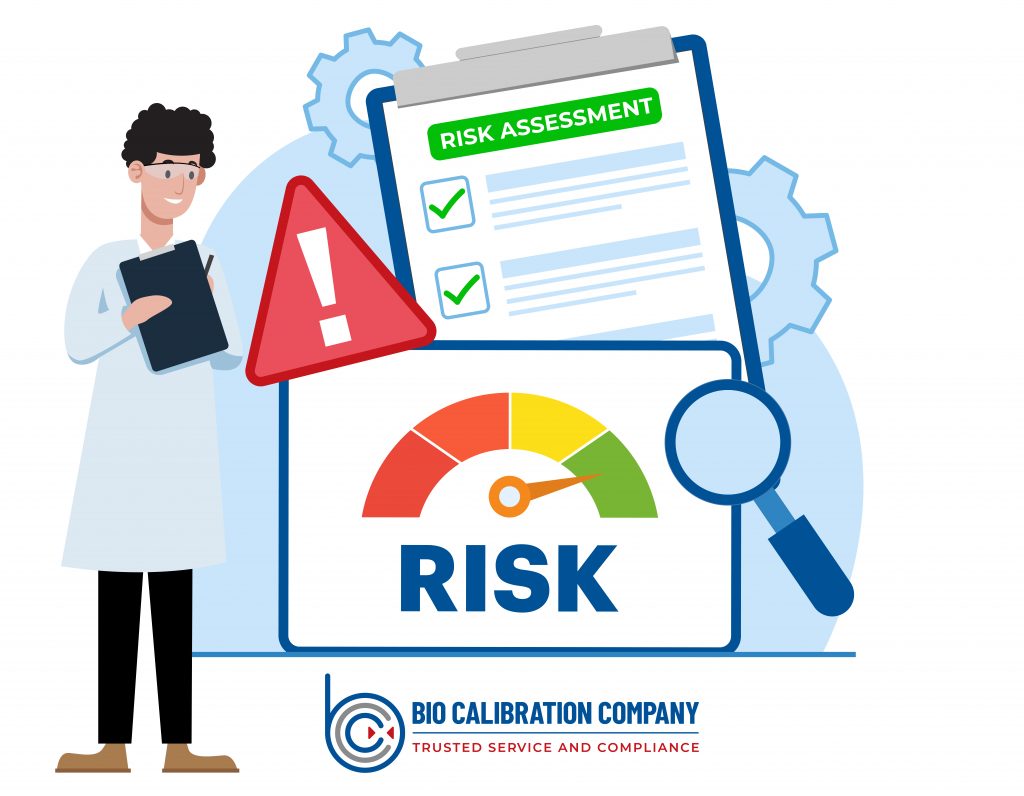
What is Proficiency Testing?

How Can I Be Sure That I Can Trust ISO/IEC 17025:2017 Accredited Laboratories and Their Measurements?
There are several reasons why ISO/IEC 17025:2017 accredited pipette calibration laboratories are more credible than non-accredited laboratories. To name a few, they are audited yearly by a 3rd party assessor, they have standard requirements that must be implemented in their lab and business processes, and they are required to report measurement result expectations to their customers. (Read blog – What is the Decision Rule?).
One of the requirements for accredited labs is participation in proficiency testing (PT). This is another primary reason that using accredited laboratories for calibrating your pipettes and other equipment is so important.
What is Proficiency Testing?
Proficiency Testing is an inter-laboratory comparison that pipette calibration laboratories participate in to ensure all participants agree on the results of the calibration. In this comparison study, all participating labs are testing the same piece of equipment. The equipment is issued to these labs by the company providing proficiency testing services. All the labs in the study will perform the required measurements on the equipment issued to them and report their results to the provider. The results are then analyzed statistically and reviewed to determine which results align with or disagree from the rest of the labs.

Why is Proficiency Testing Important?
Proficiency Testing is essential because it involves comparing how independent labs report calibration results on the same piece of equipment. During proficiency testing, an artifact is sent to several different labs that have signed up to participate in the proficiency test study. Therefore, all labs included in the study will be provided with the same piece of equipment and report the range of measurements required for the study. The company that offers the test will analyze the results after they have been submitted, conduct a statistical comparison, and determine how the reported results align or differ from one another. This is important because ISO/IEC 17025:2017 accredited labs are all required to perform proficiency tests. That means that if you are using an accredited lab for pipette calibration services, they have had to demonstrate their calibration competency by comparing it to other lab equipment calibration companies. There is significant value added to this one aspect of using an accredited lab for equipment calibration services.
What ISO/IEC 17025:2017 Requires.
ISO/IEC 17025:2017, section 7.7.2, requires laboratories to monitor their performance by comparing it with the results of other laboratories. It requires the lab to monitor the plan for this action and have leadership review it to ensure its effectiveness.
There are two ways the lab can compare its results with those of other labs that are compliant with this section. The first is Proficiency Testing, and that is what we will focus on here. However, there is another option for labs to perform interlaboratory comparisons with other labs. This is nearly the same as proficiency testing. Still, it usually involves only two labs that have privately agreed to share the results of one testing or calibration item, and the statistical analysis is conducted in-house. Proficiency Testing is typically conducted through an accredited provider and involves multiple labs. The test provider usually performs the statistical analysis of the results.
The most important part of this section in the ISO/IEC 17025:2017 standard is that the company accrediting the lab must approve the Proficiency Testing plan (PT plan). Before being accredited, the lab will propose a PT plan, and the auditing company will approve it. This is beneficial for customers of calibration labs to know that there is a company ensuring their calibration provider performs tests according to industry standards and that the results align with those of other industry experts.
Another question that arises is how often my calibration provider needs to perform these tests. It’s a good question. The answer is vague and annoying, in that the ISO/IEC 17025:2017 standard doesn’t state anything about intervals. It’s really a matter of how the lab creates its proficiency testing plan.
However, the lab won’t get away with creating a plan that doesn’t benefit their customers. For example, doing a PT every 10 years for pipette calibrations. The reason the lab cannot do this is that the accreditation company performing the surveillance audit has specific requirements for proficiency testing. They are going to require the lab to do them at a defined interval (usually every year) or on a risk-based plan.
Therefore, although ISO/IEC 17025:2017 doesn’t specify a specific interval for proficiency testing, the accreditation company performing the audits on the lab will have its own requirements that the lab must meet. These, again, are usually annual or risk-based requirements.
Common Challenges to Annual Proficiency Testing Requirements
Many laboratories use accreditation companies that require annual PT tests. This is usually challenging to maintain and often results in the lab having a deficiency in its yearly audit that needs correction. The reason it’s difficult is that proficiency tests take time. There is a time commitment from the lab to complete the testing, and it takes time for the PT provider to process and analyze the testing results.
Recall that proficiency testing results are not only the labs’ completed results, but how those results compare to all the other participating labs’ results. So, suppose you are the first lab to receive a proficiency test. In that case, you won’t be able to get any results from the provider until a specific number of labs have also received and completed the proficiency test. So, even if a lab completes its proficiency test on time, it’s not always the case that the completed results will be provided by the deadline.
Another challenge is that proficiency testing requires time at the lab. Labs have customer equipment to calibrate and perform other customer-related activities. Allocating a dedicated technician to a proficiency test can be challenging.
Risk-Based Approach
One way accreditation companies have addressed the issue of numerous deviations related to proficiency testing being completed on time is by adopting a risk-based approach to proficiency testing. This means that the lab would not have to provide proficiency testing results to the accreditation company every year. The lab would define risk-based intervals and make a proficiency testing schedule based on a risk timeline. The lab will turn in the proficiency plan to the accreditation company, and it will be either approved or rejected. If the risk-based timelines are reasonable, then this prevents the lab from having to complete a proficiency test every single year.

In conclusion, ISO/IEC 17025:2017 accreditation is a reliable indicator of a pipette calibration laboratory’s credibility and competence in delivering accurate measurements. Accredited labs undergo rigorous third-party audits, adhere to standardized processes, and are required to participate in proficiency testing. Proficiency testing ensures that these labs consistently produce reliable results by comparing their performance with other independent labs. While the annual proficiency testing requirement can be challenging, especially in terms of time and resource allocation, adopting a risk-based approach offers flexibility without compromising quality. By choosing an ISO/IEC 17025:2017 accredited laboratory, you can trust that their measurements are both accurate and dependable, backed by stringent oversight and continual evaluation.
